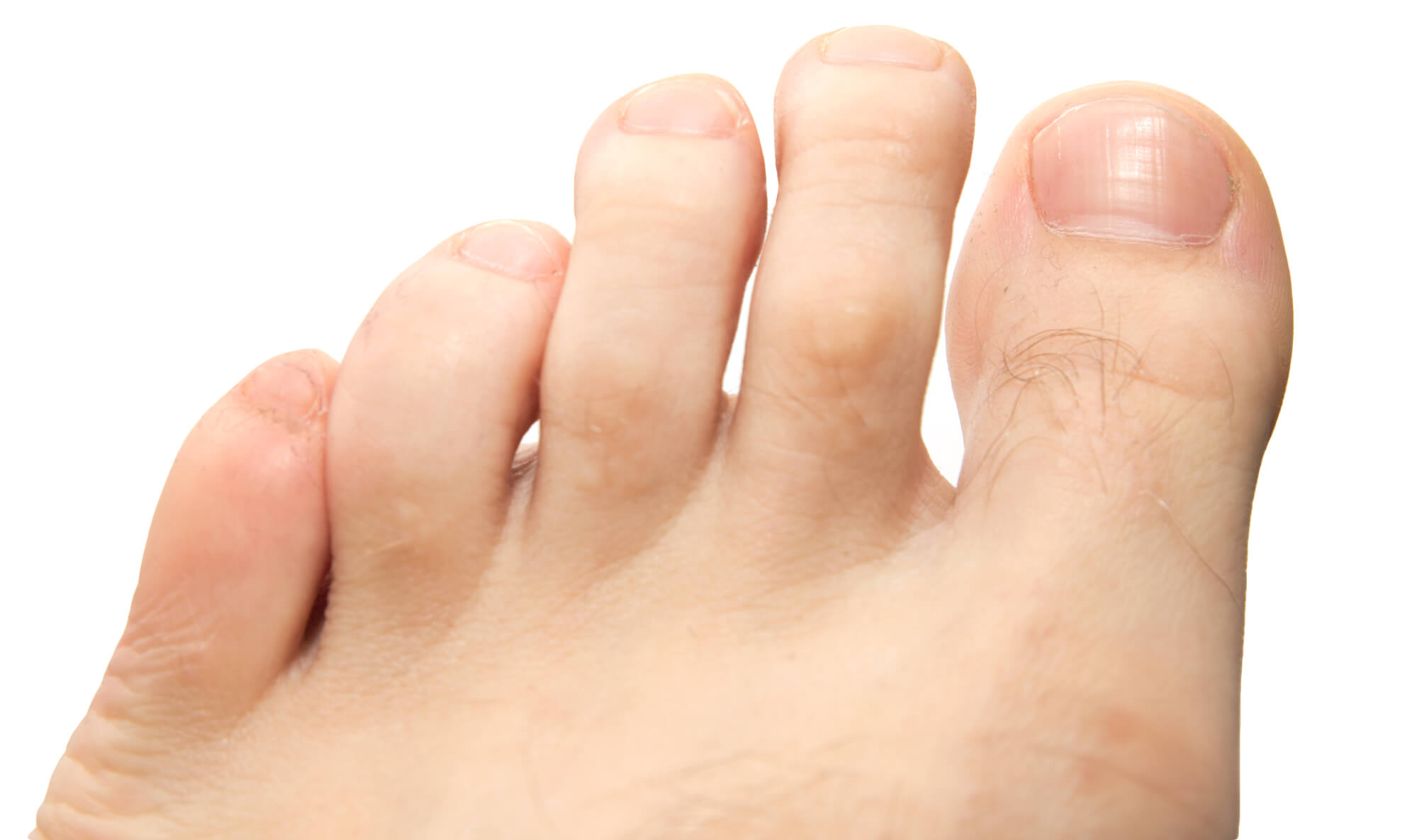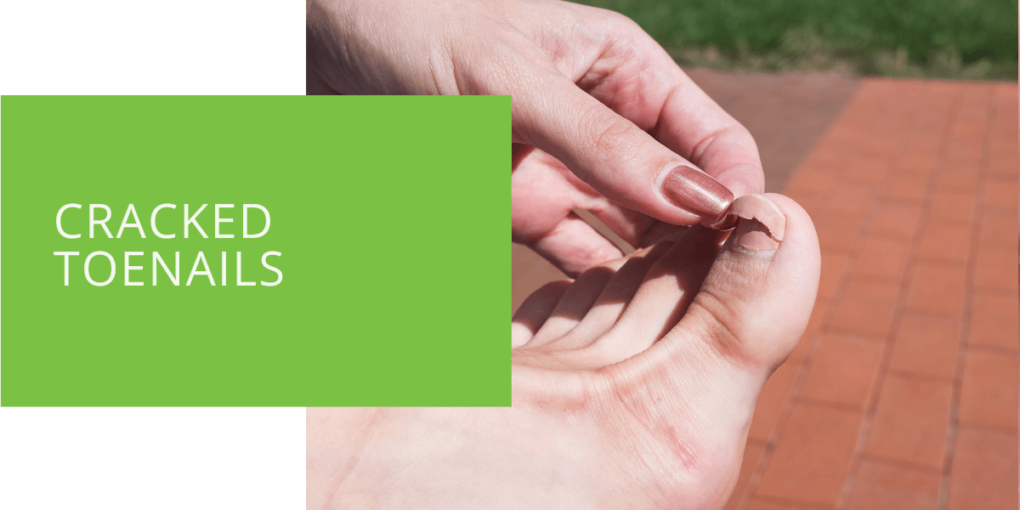Cracked Toenails: Causes, Treatment, and When to See a Doctor
Cracked toenails are a frequent problem that can cause pain and affect the appearance of your feet. Knowing the reasons behind it, available treatment options, and when to consult a doctor is crucial for maintaining healthy toenails and avoiding further complications. In this complete guide, we will explore the topic of cracked toenails, offering professional tips and practical advice.
Key Takeaways
- Cracked toenails can result from various factors, including dryness, trauma, fungal infections, and underlying conditions like psoriasis.
- Treatment options range from self-care measures like moisturizing and trimming to medical intervention by a podiatrist, including prescription medications and nail reconstruction.
- Timely consultation with a podiatrist is crucial to prevent long-term damage when experiencing severe pain, signs of infection, persistent cracking, or changes in nail appearance.
What Causes a Cracked Toenail?
Cracked toenails can stem from various factors, each contributing to the weakening of the nail structure. Understanding these causes is key to both prevention and effective management. Let's delve into the primary factors behind cracked toenails:
Dry and Brittle Toenails
One common culprit behind cracked toenails is excessive dryness and brittleness. Like our skin, toenails need adequate moisture to remain supple and resilient. Factors such as prolonged exposure to harsh weather conditions, repeated use of nail polish and polish removers, or the natural aging process can dry and brittle toenails. This increased fragility makes them more susceptible to cracks.
Trauma or Injury
Accidental trauma or injury to the toenail can lead to immediate damage and visible cracks. Stubbing your toe against a hard object or accidentally dropping a heavy item on your foot can exert immense pressure on the toenail, causing it to fracture. The severity of the injury can determine the extent of the crack.
Fungal Infections
Fungal infections, including toenail fungus, can significantly weaken the nail bed and ultimately lead to toenail cracks. Besides the cracking, fungal infections often manifest with symptoms like discoloration and thickening of the nail. It's essential to address the underlying fungal issue to prevent further damage.
Improper Footwear
The shoes we wear play a crucial role in maintaining healthy toenails. Wearing too tight or ill-fitting footwear can exert continuous pressure on the toenails, increasing the likelihood of cracks. Ensuring that your shoes provide adequate room for your toes is essential to prevent unnecessary stress on your toenails.
Health Conditions
Certain underlying health conditions, such as psoriasis, can affect the health of your toenails. Psoriasis can lead to nail bed issues, making toenails brittle and prone to cracking.

How to Treat a Cracked Toenail
When faced with a cracked toenail, there are several approaches to consider, depending on the severity and underlying causes. We will explore these treatment options in detail to help you make an informed decision on how to address your situation.
Home Remedies and Self-Care
Home remedies and self-care can be highly effective in managing cracked toenails in less severe cases. Here are some steps you can take:
- Moisturizing and Nail Hygiene: Keeping your toenails and cuticles well-moisturized is crucial to prevent further dryness and brittleness. Avoid using nail polish removers that contain harsh chemicals, as they can exacerbate dryness.
- Trimming and Filing: Gently trim and file the cracked toenail to prevent it from catching on objects, causing additional damage. Ensure that you use clean and sanitized tools to avoid introducing infections.
- Protective Measures: Consider applying a bandage or adhesive to the cracked toenail. This can provide temporary protection and stability while the nail heals.
Over-the-Counter Solutions
If home remedies do not yield satisfactory results, there are over-the-counter products available:
- Nail Hardeners and Adhesives: Nail hardeners and adhesives can help strengthen the damaged toenail, offering added protection during the healing process.
Medical Treatment Options
In more severe cases or when home remedies and over-the-counter solutions prove insufficient, it is advisable to seek professional medical guidance and treatment:
- Podiatrist's Intervention: A visit to a podiatrist is recommended if your cracked toenail is severe, causes persistent pain, or shows signs of infection. A podiatrist can assess the extent of the damage and recommend appropriate treatment strategies.
- Prescription Medications: In cases where a fungal infection contributes to the problem, your podiatrist may prescribe antifungal treatments or other medications to address the underlying issue.
- Nail Reconstruction: For toenails that have sustained extensive damage, nail reconstruction techniques may be employed. These techniques involve using specialized materials to rebuild and strengthen the nail.
Preventing Cracked Toenails
Prevention is often the best approach when it comes to cracked toenails. Taking proactive steps to maintain the health of your toenails can go a long way in preventing future issues. Here are some valuable tips for promoting healthy toenails:
Tips for Nail Health
- Proper Footwear Selection: Choose shoes that provide ample room for your toes, preventing unnecessary pressure on the nails. Ensure that your shoes fit well and are not excessively tight.
- Avoiding Trauma: Be cautious to avoid accidental injuries to your toes. Pay attention to your surroundings when walking and handle objects carefully.
- Managing Health Conditions: If you have underlying health conditions like psoriasis that affect your toenails, collaborate closely with your healthcare provider to manage these conditions effectively.

Lifestyle Changes for Stronger Toenails
Incorporating some straightforward lifestyle changes can contribute to the overall strength and health of your toenails:
- Incorporate biotin-rich foods into your diet, as biotin is known to support healthy nail growth.
- Limit the frequent use of nail polish and nail polish removers, as they can weaken the nails over time.
- Maintain good foot hygiene by keeping your toenails clean and dry.
When Should You See a Doctor?
While many cases of cracked toenails can be managed effectively at home, certain signs should alert you to seek medical attention:
- Severe Pain and Discomfort
- Signs of Infection, such as Redness, Swelling, or Pus
- Persistent Cracking Despite Home Remedies
- Changes in the Nail's Appearance, such as Discoloration
Recognizing these signs and acting promptly is essential to prevent complications and ensure proper treatment. Ignoring these indicators may lead to long-term nail damage and potentially more extensive health issues.
Conclusion
Comprehending the causes of cracked toenails and familiarizing yourself with how to treat and prevent them is essential for maintaining healthy feet. While self-care and home remedies are often effective, seeking professional medical attention when necessary is crucial. Our expert podiatrists are here to assist you with any toenail concerns. We encourage you not to hesitate and to schedule an appointment for personalized guidance and treatment.
Remember that taking care of your toenails extends beyond aesthetics—it plays a pivotal role in ensuring your overall foot health. Begin implementing these recommendations today to put your best foot forward in terms of both appearance and well-being.
FAQ
How do you treat a cracked toenail?
Treating a cracked toenail depends on the severity and underlying cause. You can try home remedies such as moisturizing, trimming, and protecting the nail for minor cracks. Over-the-counter nail hardeners and adhesives can also help. In more severe cases, especially with an infection, it's advisable to consult a podiatrist for professional treatment.
What causes a toenail to split?
Toenails can split due to various factors. Common causes include:
- Dryness and brittleness.
- Trauma or injury, such as stubbing your toe.
- Fungal infections.
- Improper footwear.
- Underlying health conditions like psoriasis.
Understanding the cause is crucial for effective prevention and treatment.
Should a cracked toenail be removed?
In most cases, you should not attempt to remove a cracked toenail yourself. If the crack is causing severe pain or signs of infection or is extensively damaged, it's best to seek professional medical advice from a podiatrist. They can assess the situation and determine the appropriate action, including nail reconstruction or other treatments.

